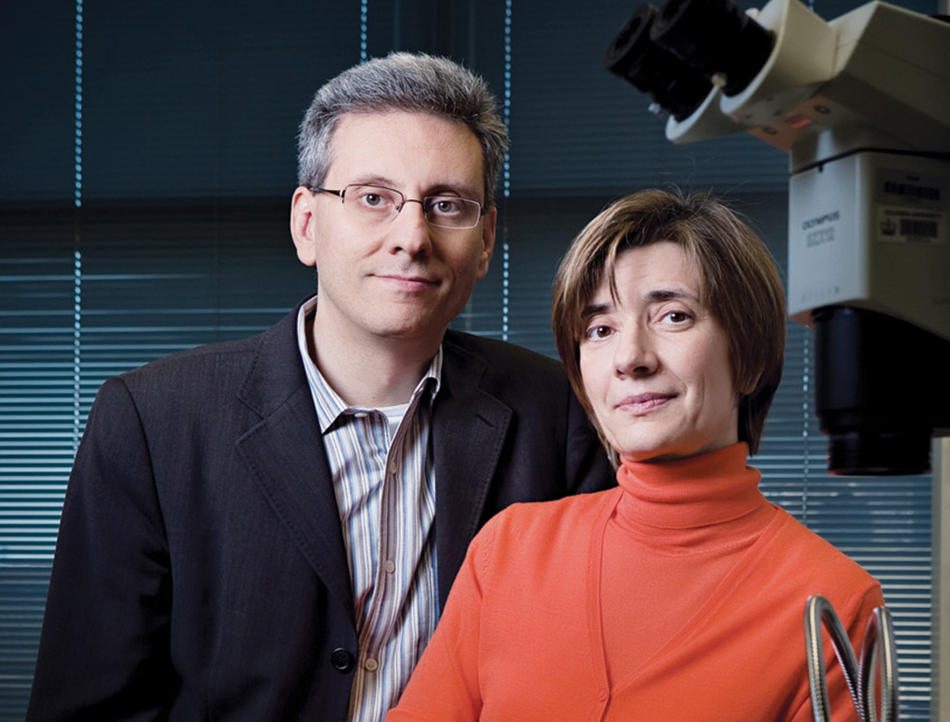It is a deadly embrace: two genes sitting side by side on a chromosome somehow collapse into each other during the normal process of cell division, combining their DNA to form a strange new gene. This gene, which can duplicate itself successfully in subsequent cycles of cell growth, wreaks havoc within a cell, eventually leading to its destruction.
Columbia researchers led by Antonio Iavarone and Anna Lasorella have shown that this process, which is called genetic fusion, contributes to the most common and deadly form of brain cancer: glioblastoma. Affecting some 10,000 Americans each year, glioblastoma is nearly always fatal, even when treated aggressively with surgery, radiation, and chemotherapy. After diagnosis, people with glioblastoma live, on average, for just fourteen months.
The scientists’ findings do not apply to all cases of glioblastoma. Their study suggests that the fusion of genes FGFR and TACC is involved in just 3 percent of cases. But the discovery could lead to new treatments for people with this subtype of the disease.
“From a clinical perspective, we have identified a druggable target for a brain cancer with a dismal outcome,” says senior author Iavarone, a professor of pathology and neurology at Columbia University Medical Center.
The discovery is particularly exciting, says Iavarone, because the destructive protein that gets produced by the new FGFR-TACC gene is not found in healthy cells. This makes him hopeful that if a drug is found that can shut down the protein, it may do so without causing side effects.
Several single-gene mutations had been linked to glioblastoma in the past. “However, therapies targeting these alterations have not improved clinical outcomes, most likely because they have systematically failed to eradicate the proteins to which the tumor is addicted,” he says.
The Columbia researchers, to confirm that the protein produced by FGFR-TACC causes glioblastoma, injected the protein into healthy mice, 90 percent of which went on to develop tumors. In a separate experiment on mice with glioblastoma, the scientists administered a drug to block the protein and were able to double the mice’s survival time.
Iavarone is now recruiting scientists at other institutions to launch a human trial to see if the experimental drug his team used in the mouse study, which is known as an FGFR inhibitor and is currently being tested on people with other forms of cancer, will help people with glioblastoma.
The scientists also hope their discovery will point the way to explaining other types of glioblastoma.
“It’s unlikely that we’ll find a single gene fusion responsible for most glioblastomas,” says Lasorella, an associate professor of pathology and pediatrics. “But we may discover a number of other gene fusions, each accounting for a small percentage of tumors, and each with its own specific therapy.”



